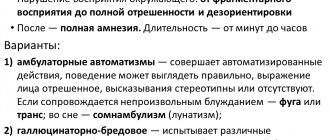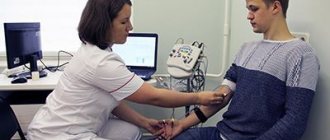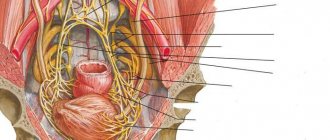Herpes infection is caused by viruses of the Herpesviridae group and is characterized by damage to the skin, mucous membranes, eyes, and nervous system. In 1999, WHO declared a pandemic of herpesvirus infections, which emphasizes the medical and social significance of this problem in the world. The high incidence of herpesvirus infections, according to experts, will determine the future of infectious pathology in the foreseeable future. Susceptibility to infection does not depend on age or gender. All types of herpes can cause severe illness in adults and children. Herpes viruses can infect various human organs and systems, so herpes can be considered as a general systemic disease of the body.
- Types of herpes viruses
- Severe consequences of HSV infection
- Effect on the nervous system
- Psycho-emotional state during relapses of herpes
- The role of immunity in the occurrence of HSV relapses
- Systemic disease
- What is the treatment like?
- Treatment protocols of the Ministry of Health of the Russian Federation
Types of herpes viruses
In the modern world, people already understand that a “cold” on the lips is far from the only “harmless” manifestation of a herpetic infection. In order to better understand the problem, let’s clarify how many types of herpes there are. Eight serotypes are known to science today. These are herpes simplex viruses (HSV) types 1 and 2, Varicella Zoster virus (causes chickenpox and shingles), cytomegalovirus (CMV), Epstein-Barr virus (EBV), human herpes viruses 6, 7- 1st and 8th types. 1
Chicken pox. Caused by herpes virus type 3, transmitted by airborne droplets. Symptoms of chickenpox: moderate fever and intoxication, rashes on the skin and mucous membranes in the form of papules. The disease is extremely contagious. Susceptibility to chickenpox is almost absolute, which causes a high incidence in childhood, after which strong immunity remains. Despite acquired immunity, the virus is present in the body for life in a latent state in the nerve ganglia. When the body weakens, even after many years, its activation may occur in the form of herpes zoster. In a typical mild form, the general condition of those infected is satisfactory, while in a moderate condition, the temperature rises to 38.5-39ºC and there is a profuse rash. The rash period is 4-5 days, sometimes longer. In severe cases, the patient's general condition is significantly impaired. In extreme heat up to 39.5-40ºC, the symptoms of intoxication are pronounced - headache, weakness, irritability, sleep disturbances, lack of appetite, vomiting and loose stools are possible.
Infectious mononucleosis is caused by the Epstein-Barr virus, also known as herpes virus type 4. The disease mainly affects children and can be both a cause and a consequence of decreased immunity. Chronic infection caused by the Epstein-Barr virus is characterized by a long, relapsing course and the presence of clinical and laboratory signs of viral activity. The disease can present with a variety of symptoms ranging from weakness and fatigue, body aches to rashes and cough, dizziness, depression and asthenia. At the peak of infection, the temperature rises. Epstein-Barr virus can lead to the development of the following diseases:
– Filatov’s disease (infectious mononucleosis);
– Hodgkin's disease (lymphogranulomatosis);
– damage to the lymph nodes,
– formation of neoplasms;
– immune deficiency;
– systemic hepatitis;
– damage to the brain and spinal cord (multiple sclerosis) and others.
Herpes simplex in adults (HS). The cause of the disease is infection with HSV-1 or HSV-2. The disease manifests itself as an itchy rash in the form of grouped or single blisters ranging in size from one to several millimeters on the skin and/or mucous membranes, accompanied by swelling and redness. In severe cases, the infection can affect internal organs. The disease becomes chronic and can recur. These viruses remain in the body forever, sometimes coexisting with other members of the group.
Once on the mucous membrane or in the upper respiratory tract, the virus actively multiplies. Infection occurs when biological fluids containing the virus come into contact with mucous membranes, for example during intimate contact, through kissing, or through dirty hands. It is possible to transfer the virus from a herpetic lesion to other places, for example, from the oral cavity to the conjunctiva of the eye, to the genital area, to any part of the body through microdamage to the skin. There is a small chance that the virus can be transmitted through the air through saliva.
Herpes viral infection: placing emphasis.
– The next, very relevant topic is “Herpesvirus infection”. And I am pleased to give the floor to Andrey Viktorovich Ignatovsky.
Andrey Viktorovich Ignatovsky , Candidate of Medical Sciences:
– Good afternoon, dear colleagues. We continue our conversation about infectious agents. Today, herpesvirus infection remains one of the most pressing problems for doctors of almost all specialties. We very often discuss the negative impact of herpes virus infection in relation to the impact on the reproductive tract - this problem is extremely interesting to obstetricians-gynecologists and urologists. I think that this presentation will show the relevance of this problem for general practitioners and general practitioners.
We usually talk about herpes simplex viruses - the first and second types, and the third type virus - this is the varicella zoster viral infection. And, of course, I would like to start today with the varicella zoster viral infection, because this infection, probably, in the aspect of general medical practice, has an incredible number of interesting and important aspects.
So, type 3 herpes virus. You see that the first encounter with the third type of herpes virus leads to the development of chickenpox. This is a primary infection caused by a type 3 virus. A certain important aspect is that in this case, with a primary infection, the encounter occurred for the first time, the patient does not have antibodies, and the patient is not protected against this infectious agent. Hence, a rather frivolous attitude towards chickenpox can result in fatal cases, which we periodically see in Russia and which are recorded. And, of course, looking at almost all cases, we see that the patient received standard therapy for a mild form, and it was not taken into account that the patient was not protected, and there are etiotropic drugs that were not used in almost all fatal cases prescribed by a doctor. Further, the virus in patients who have had chickenpox remains in the spinal ganglia, and relapses of herpesvirus infection occur in the form of herpes zoster.
For whom is a patient with herpes zoster dangerous? It is dangerous for those patients who have not had chickenpox or have not been vaccinated against it. Today there is vaccination, and we know that we can prevent the occurrence of chickenpox. As for clinical understanding, I would like it to be the same for type 3 virus. We call the primary infection “chickenpox”, the first encounter with the virus – there are no antibodies. But the reactivation of the herpes virus from the dorsal ganglion is already called herpes zoster or herpes zoster, or herpes zoster. This is a slide from one of the conferences where fatal cases were analyzed, and the lecturers presented, among other things, our frivolous attitude towards herpes virus infection caused by the third type virus. Indeed, it seems that it is easier to get over it if there is an outbreak of chickenpox in a children's group - it may be better to take children there who have not been sick, many parents believe. A child exposed to the virus will get sick. I would caution against such reckless tactics. It is better to vaccinate the child in this case, and carefully monitor those children who have chickenpox in order to promptly determine the indications for prescribing systemic etiotropic antiviral drugs. Professor Tatochenko said, in my opinion, a very beautiful and correct phrase: “Infection is always a risk. The doctor’s task is to reduce it to a minimum.” As for chickenpox, as for viral infection, today we can do this in a number of cases and completely avoid severe complications and sometimes deaths.
It must be remembered that etiotropic antiviral drugs that are effective against the first and second type of virus, that is, against the herpes simplex virus, are almost as effective against varicella zoster viral infection. There are differences, I think we will have time to talk about them today, between the effects of acyclovir and penciclovir on the herpes virus of the first, second and third types. But, nevertheless, these drugs are etiotropic in relation to the herpes virus of the first, second and third types.
What danger should expect pregnant women who have chickenpox? The situation is probably not so common, but this leads to a lot of problems. We always discuss this rather large block of issues with obstetricians and gynecologists at our round tables. But it is important for a general practitioner to remember that the risk of chickenpox pneumonia is about 10%.
Returning to the further course of herpes virus infection, it is necessary, of course, to touch upon the issue of herpes zoster. The traditional idea, which many remember from their student days, is that herpes zoster appears in the area of the chest dermatomes, thoracic segments. Of course, yes, but we must remember that almost the entire human body is divided into dermatomes, and we can see the reactivation of a herpes virus infection in the form of herpes zoster in the area of any dermatome.
Here are the traditional clinical manifestations - this is a chest dermatome. Classic manifestations are erythema, edema and grouped microvesicles, blistering rash. But we must remember that if we see lesions in the area of several dermatomes, then, of course, we are talking about the fact that the herpes virus infection is acquiring, or in this case the patient has, a severe course. Dermatomes can be in different localizations, in particular, genital localization can be, these can be manifestations in the sacral area, and here it is necessary to differentiate these manifestations with the zosterophoric course of herpesvirus infection, which can be caused by the herpes simplex virus, but of the second type.
If we are talking about severe, atypical forms, then, of course, we must remember that the third type of virus also has such forms. And here we see the patient’s blisters filled with hemorrhagic contents. This is a hemorrhagic form. There may be typical rashes, but in the breast area. If the patient is not examined completely and does not see this linearity of the rash, then one might think that she has some manifestations on the mammary gland. However, a complete examination of the patient gives an idea and allows for a correct and timely diagnosis.
I would point out that previously the occurrence of herpes zoster in elderly patients was considered traditional. However (and we even wrote an article at our department, observing patients at the Ott Institute of Obstetrics and Gynecology), the patient population has just become younger. We also saw young women, just in the period of pregnancy, in the period of feeding.
We must not forget about special localizations, which are extremely dangerous, primarily due to life-threatening conditions. This is ophthalmoherpes. Ophthalmoherpes is dangerous because the path of development of this inflammatory process affects both the blood vessels and the membranes of the brain. And here the risk of complications is enormously higher. Starting from acute retinal necrosis and ending with stroke. That is why, having met such a patient, a doctor of almost any specialty should not redirect him, playing the role of some kind of “switchman,” but take over the initial stage of patient management, and then attract specialists of the required profile - ophthalmologists, neurologists. But an etiotropic antiviral drug should be prescribed as soon as the patient comes to your appointment. You can consider this an emergency.
The initial manifestations are very interesting. It is always erythema, swelling. There may be no microvesicles, but the fundamentally important point is that (we can go back to the previous slide and look at this slide) clearly half of the face is affected, as if a lesion was drawn along a ruler. But the apex of the nose is always involved if it is affected in the patient. And here we clearly see a unilateral lesion, which makes it easy to make a diagnosis. Neither the allergic process will proceed like this, clearly delineated, nor any other.
It must be remembered that in 10% of patients with normal immunity with herpes zoster, hematogenous spread of the infection with the development of a disseminated form is possible, which should also alert the doctor and make him especially attentive to such patients. We must remember that clinical manifestations are not only rashes, but also pain. It usually accompanies this process and is present in different forms. We will also talk to you about pain options today.
Postherpetic neuralgia is considered one of the most dangerous complications among all the main groups; we see that there are many of them: skin, visceral, neurological, and ocular complications. But postherpetic neuralgia is most difficult to treat with medication. Sometimes, even with correct and timely prescribed therapy, it is impossible to avoid such a complication.
What is postherpetic neuralgia, and who is at higher risk? These are elderly and older patients. The area of the rash matters: the maximum risk is the area of the trigeminal nerve and brachial plexus. Other areas have a moderate or lesser risk, but this does not exclude the occurrence of such pain syndrome. Of course, pain in the prodrome, preceding the rash, and a pronounced rash.
We must remember that the older the patient is, the higher the risk of developing postherpetic neuralgia. What do we mean by postherpetic neuralgia? Perhaps, this Dworkin classification is the most acceptable, and it most correctly shows us that we can consider postherpetic neuralgia to be pain that lasts four months or longer. Everything up to four months is divided into either acute herpetic neuralgia or subacute herpetic neuralgia. A fundamentally important point in this classification is the therapeutic approaches. They are different. At the initial stage of the disease, along with inflammatory pain caused by the influence of the virus, neuropathic pain also arises. The fundamental difference is that we can effectively control inflammatory pain with non-steroidal anti-inflammatory drugs and analgesics. But unfortunately, we cannot influence the pain, which is called neuropathic, with anti-inflammatory drugs and analgesics, and over time, just by the fourth month, the significance of inflammatory pain practically decreases, but the significance and role of neuropathic pain increases enormously. That is why for patients who have been ill for a long time, whose pain persists after suffering from herpes for four months or more, the prescription of analgesics is useless; completely different classes of drugs must be prescribed, involving a neurologist for consultation. Without a neurologist, competent treatment of such a patient is impossible.
You see that the types of pain can be completely different - this is both acute and tearing pain. Sometimes it can be allodynia - pain with a light touch. But, nevertheless, all this causes extreme suffering to our patients. How to avoid this pain? How to avoid postherpetic neuralgia? Early appointment – up to 72 hours. Doctors often misunderstand 72 hours. The patient came back after 74 hours, but he has rashes, there is activity of the process - we must still prescribe such therapy. We are talking about ideal conditions - the sooner such therapy begins, the better results we will get. Of course, the prescription of highly effective antiviral drugs, I am primarily talking about famciclovir, adequate pain relief in the acute stage. Quite good preliminary results have been obtained on the effectiveness of vaccination. What treatment principles exist today for herpes virus infection? Of course, this is etiotropic therapy. It must be remembered that nucleoside analogues are the drugs of choice today for the treatment of all forms of herpesvirus infection. Immunomodulatory therapy is pathogenetic therapy. We can do without her. It is not included in any protocol - international or domestic. Symptomatic therapy, of course, has a certain value.
And, of course, you need to remember that etiotropic drugs are acyclovir, its valino- and fervalocyclovir and famciclovir. (00:12:30) Symptomatic therapy will most likely be required for a patient with herpes zoster. These are analgesics, non-steroidal anti-inflammatory drugs and, at the stage of pain control, physiotherapy, but not ultraviolet radiation. It must be remembered that ultraviolet radiation is an aggressive, damaging factor. Tanning is a protective function of the skin.
When choosing a drug, you must remember that the most sensitive to acyclovir - the herpes simplex virus of the first and second types, varicella zoster - is more than 20 times, and cytomegalovirus is 470 times less sensitive to acyclovir than the herpes simplex virus of the first type. If we talk about drugs, then, of course, we need to remember that today both acyclovir drugs (acyclovir and valacyclovir, and famciclovir) differ in bioavailability. The bioavailability of drugs is different, due to their pharmacokinetic characteristics and, above all, accumulation in certain structures. And it is important for us, when speaking and discussing herpes virus infection caused by herpes simplex virus and herpes virus type 3, accumulation in Schwann cells, because the spread of the virus from the spinal ganglion occurs perineurally, periaxonally and, precisely, along Schwann cells. The concentration of penciclovir - the active substance famciclovir - is many times higher than the concentration of acyclovir.
And one more important point - we say that abnormal nucleosides become active under the influence of the enzymes of the herpes virus itself and accumulate only selectively in infected cells. We must remember that all acyclovir drugs (this applies to acyclovir, valacyclovir) are intracellular for less than an hour or about an hour. If we are talking about famciclovir, then you see, based on the table, which, in fact, is based on data from numerous studies, that the varicella zoster virus allows the drug to remain in the infected cell from 7 to 11 hours.
The route of elimination is the kidneys. We must now remember this very important aspect, because at the end of my presentation I will show questions, and we will touch upon the issues of medicinal safety of the use of these drugs. If we talk about comparative analysis and dosages of drugs, then, undoubtedly, such studies have also been conducted. And you see in this diagram the comparative dosages of famciclovir at a dose of 250 mg three times a day, 500 mg three times a day. And a comparison with acyclovir - the traditionally known dose of 800 mg five times a day.
We see, of course, that acyclovir is lagging behind. Its pharmacokinetic and pharmacodynamic properties differ from famciclovir. And, of course, the powerful effect with a more modern form of famciclovir provides better therapeutic indications, which is why today it is considered the number one drug for the treatment of herpes virus infection, caused, in particular, by the herpes virus type 3.
If you and I are discussing indications, then, of course, in this case herpes zoster is important to us. We have already discussed accumulation in Schwann cells. And the dosages will vary: in patients with normal immunity, the dosage is 250 mg three times a day, or 500 mg twice a day. The only difference, when the dosage will need to be doubled or increased, is ophthalmoherpes. Essentially, we have to say that in immunocompromised patients the dosages will always be doubled. And patients with ophthalmoherpes, even with normal immunity, still require high dosages. This is a dosage of 500 mg three times a day. If we are talking about herpes zoster in patients with reduced immunity, then famciclovir is also prescribed in double dosage, and the duration of therapy is 10 days.
Pay attention to this slide - this is a patient with ophthalmograpes. Here the dosage should also be 500 mg three times a day. Undoubtedly, it is necessary to involve a neurologist and an ophthalmologist for consultation.
Speaking about immunocompromised patients, with insufficient immunity, we must, of course, not forget about patients with the immunodeficiency virus. The thing to remember here is that famciclovir is the only drug approved by the FDA to treat both herpes zoster and genital herpes in HIV-positive patients.
If we touch on the issue of treating postherpetic neuralgia, it should be noted that drugs such as gabapentin and pregabalin will be effective in influencing neuropathic pain. And, we discussed this aspect, it is imperative to involve a neurologist. It is he who should prescribe such drugs. They may be given concomitantly with famciclovir or another abnormal nucleoside, or may be given soon after. That is, in fact, there is no need to wait for the development of postherpetic neuralgia and such a diagnosis. Recent studies have shown that the earlier we prescribe such drugs, the better the effectiveness in treating this condition. You see that there are drugs for second-line treatment, and, of course, there are certain approaches. First of all, we focus on the visual analog pain scale. And, understanding that we received or did not receive the effect of the therapy, we can adjust this therapy. This means that you need to understand that therapy is not straightforward. It is difficult for the patient, its tolerance is not always easy and simple. This requires special attention, and, I repeat once again, it is better to prevent it - by early adequate prescription of an etiotropic antiviral drug.
In the second block I would like to discuss herpes virus infection caused by herpes simplex virus types 1 and 2. Traditionally, we have divided: conventionally, we believed that the first type of virus affects the upper part of the body, localizing in the area of the face and lips. And the second herpes virus was considered genital. However, laboratory diagnostics are improving, and today we know that these viruses no longer have the clear anatomical connection that we previously distinguished.
We must, of course, remember that we distinguish between primary herpes and recurrent forms of herpes virus infection. Clinical features: acute onset of primary infection, symptoms of intoxication, enlargement of regional lymph nodes - these are, in fact, the main clinical signs. And the laboratory results will be an increase in the level of antibodies. More often we encounter primary infection in children. And this form is herpetic gingivostomatitis, herpetic manifestations in the lip area - labial herpes. If we are talking about genital localization, about the period when a person did not encounter this virus in childhood, but, having already begun sexual activity, received the virus - in this case, of course, primary genital herpes develops. Other manifestations are also possible.
If we talk to you about the symptoms of relapse, they are well known. Prodromal phenomena in the form of pain, itching, burning, discomfort in the rash area, and later clinical manifestations. They may not always be in the form of erythema and edema; both typical and atypical forms may appear. In the case of an atypical course, we will not see bubbles, as we discussed, either these bubbles will be filled with hemorrhagic contents, or they may even be blisters.
Of course, it is necessary to distinguish between degrees of severity - mild, moderate and severe. It is this aspect that will determine the doctor’s approach, planned activities and, of course, the aspect of patient consultation. If we talk about clinical manifestations, they are well known. However, it is necessary to clarify whether this is a primary herpesvirus infection or a relapse. Clinical manifestations may be somewhat similar; only laboratory tests will allow us to distinguish between primary infection and relapse. In the event of a complication, as you see on this slide, a discussion will be required regarding the use of topical or perhaps even systemic antibacterial drugs.
In the case of herpetic glossitis - a lesion of the oral mucosa - topical drugs, of course, cannot be used, and only systemic etiotropic antiviral drugs will necessarily be discussed here. Well, in this case, one should, of course, not forget that there is a risk of developing ophthalmoherpes, developing herpetic keratitis, and here an extremely important issue will, again, be a discussion not only of the use of eye drops that have an antiviral effect, but also necessarily in the prescription of systemic etiotropic antiviral drugs.
Speaking about treatment strategies for herpesvirus infection, you need to remember that there is treatment, it differs in dosage, primary infection of relapse and two options for suppressive therapy - episodic suppressive therapy in anticipation of medical manipulations and long-term suppressive therapy to prevent relapses and prevent transmission to a partner. What is important? It is important that the use of external forms today should be limited. European guidelines for the management of patients with genital herpes in 2010, citing previously published work, showed that the use of topical drugs contributes to the development of resistance to this drug. Therefore, it is necessary to limit the use of topical forms. If we are talking about the use of the drug for primary infection, here I will say what differs today is the dosage. For famciclovir they remained 250 mg three times a day, but for valacyclovir the CDC since 2010, and the World Health Organization increased the dosage since 2003. This dosage for the treatment of primary infection is 1000 mg twice daily. If we are talking about the use of valacyclovir and acyclovir, we must remember that the active substance remains the same acyclovir. By combining with the amino acid valine, a complex is obtained, which, yes, is well absorbed, but the active ingredient remains acyclovir. The dosages used to treat recurrent infections are presented on the slide. Famciclovir has the smallest dosage - it is 125 mg twice a day, for valacyclovir this dosage is 500 mg twice a day, for acyclovir this dosage can vary, ranging from 200 mg to 400 mg per single dose, and the number of such doses is from three until five.
The new dosage for famciclovir, registered in the instructions, is short courses. In fact, the whole world is fighting for such short courses. The use of the drug in case of frequent relapses contributes to the rapid relief of symptoms, while the level of antibodies increases, which further contributes to an easier course of the herpes virus infection. And this three-day treatment regimen is quite convenient for our patients. It is necessary, of course, to remember the difference in drugs, because the development of acyclovir-resistant strains today will probably slowly take one of the leading leading positions.
How do the drugs work? So, the virus has entered the cell, and then the assembly of viral DNA begins under the influence of two viral enzymes - viral thymidine kinase and viral polymerase. And the drugs that enter the cell - acyclovir and penciclovir - are similar to guanosine, one of the components of viral DNA. Next, the thymidine kinase of the virus makes acyclovir active, and this acyclovir molecule remains, relatively speaking, alone. If we are talking about penciclovir, then the situation is as follows: the thymidine kinase of the virus also activates penciclovir, but the thymidine kinase of the virus has a hundred times greater aggregation of penciclovir, and the number of penciclovir molecules is many times higher intracellularly. And then the viral polymerase mistakenly integrates penciclovir into the terminal sections of DNA, since they are abnormal, there is no complementary tail and, accordingly, the assembly of viral DNA stops. Thus, the drugs only work in those cells where the virus is present. Where there is no virus, where the virus does not replicate, the drug will not work. This is extremely important. Well, the concentration of penciclovir on the left graphs is high and stable and does not decrease over time. But acyclovir triphosphate, unfortunately, leaves the plasma very quickly, and its therapeutic concentrations quickly fall.
Speaking about labial herpes, concluding our conversation, it must be said that there is a short single-dose regimen - three tablets of 500 mg, a convenient pulse regimen, and we must, of course, not miss this opportunity, because labial herpes is often a start for some patients development of complications from the nervous system. This must be remembered.
And in conclusion, I would like to cite the work that was published in 2008. It struck me with its abstract - we don’t often pay attention to side effects and drug safety issues, but the abstract is quite interesting. The instructions for acyclovir preparations indicate that it is necessary to ensure adequate hydration of the patient even in tablet forms. But, please note, this article discusses issues when patients were given intravenous acyclovir, high dosages were required due to the severity of this process, and complications in the form of acute renal failure were obtained. What causes such complications? First of all, the molecular structure of acyclovir. It has a crystalline structure, and these crystals can damage the tubular apparatus of the kidney and, in fact, lead to the development of acute renal failure. These patients were subsequently switched to famciclovir and recovered successfully. Just the same, when using acyclovir preparations, you need to remember that both when administered intravenously and when prescribing tablet forms, it is necessary to provide the patient with good hydration.
Thank you for attention.
Severe consequences of HSV infection
Along with common manifestations of infection on the lips, mouth, nose, face, buttocks and genitals, herpes can affect internal organs, meninges, nerves, causing such severe conditions as meningitis, encephalitis, neuritis, meningoencephaloradiculitis, cause bronchitis, pneumonia , damage to lymphocompetent organs: liver, spleen, pancreas and even sepsis. Some of the criteria for infectious encephalitis - inflammation of the brain - are disturbances in the mental or mental status of the patient, fever, convulsions, neurological symptoms, and changes in the ECG.
Methods of infection with viruses
Infection with viruses can occur through airborne droplets, household contact, sexual contact and blood contact. Infection is possible both from patients and from carriers of the virus. The infection persists for a long time in a dried state and can be easily transmitted through household items: cups, towels, toys. The virus also spreads through saliva, blood, vesicle contents, semen, vaginal secretions and other body media.
Infection often occurs in the form of autoinoculation, which involves mechanical transfer of viral particles from one site to another. For example, the virus can spread through the skin and mucous membranes when scratching.
Susceptibility upon contact is quite high. It is believed that about 90% of the adult population are carriers of one type or another of herpes and up to 25% suffer from recurrent forms. As a rule, when examining frequently ill children and adults, several herpes viruses are detected at the same time.
How does herpes affect the nervous system?
Each type of herpes virus is associated with certain lesions of the nervous system: HSV-1 with meningoencephalitis, Varicella-Zoster - most often causes uncomplicated herpetic meningitis, it is very tropic to the cerebellum, so post-varicella complications (cerebellitis) may occur in children. Herpesviridae viruses carry out their activity in epithelial cells and nerve cells. Through the blood and lymph flow, HSV spreads throughout the body. In a short period of time (about three hours), the virus penetrates the nerve ganglia, where it remains in a latent state. HSV-1, which mainly affects the mucous membrane of the oral cavity, nasopharynx, lips, is constantly located in the vascular endothelium, vascular nerve bundles, sensory ganglia of the trigeminal nerve and other cranial nerves. HSV-2, which causes predominantly damage to the genitals, perineum, anal area, lower extremities, and buttocks, “lives” in the ganglia of the lumbosacral spine. HSV-1 can spread along the optic and olfactory nerves and subsequently penetrate into the central nervous system. In the nerve ganglia, the virus becomes inaccessible to the cells responsible for protecting the body from aggressors. Since the virus is able to spread from an infected cell to neighboring ones, bypassing the intercellular space, it avoids contact with antiviral antibodies. In the acute stage, the virus leaves the cell it destroys and passes into the blood, where it becomes available to phagocytes. In addition to affecting the nervous system, herpesvirus infections cause an imbalance in the interferon system and inhibit the cellular and phagocytic reactions of the body. It is believed that herpes indirectly has a negative effect on the state of the cardiovascular system, provoking the formation of plaques and blood clots due to damage to the vascular walls and the production of more cholesterol.
Isolation and identification of HSV
In specialized virology laboratories, HSV is isolated using the culture method. Its essence lies in the fact that the material for research (the contents of herpetic eruptions, human secretions) is placed on specially grown cells in which the virus begins to multiply. Then, after 5 days, the presence of HSV is determined by characteristic changes. Thus, we can say for sure that this disease is of a herpetic nature.
To identify the causative agent of HSV, the polymerase chain reaction (PCR) method is widely used, which makes it possible to find out what type of herpes virus is present in the body. The material for research is taken with a special brush from the rash sites. The PNR method is highly sensitive and is performed within 24–48 hours.
The role of immunity in the occurrence of HSV relapses
Cellular immunity plays an important role in the development of the disease. Exacerbations may be associated with a decrease in local immunity during operations, injuries, sexual contact with damage to the mucous membrane, the use of certain drugs, intensive facial treatment during cosmetic anti-aging procedures, sunburn, and so on. A significant role in the pathogenesis of herpes is played by deficiency of interferons, the level of which can be reduced by ten to twenty times compared to normal.iii. According to the results of studies, a decrease in the production of interferons was noted in the foci of herpetic lesions themselves. Allergy sufferers usually have a more severe infection.
Serodiagnosis
Antibodies to the herpes virus appear in the blood serum by 4-7 days after the initial infection, reach a peak after 2-3 weeks and can persist throughout life. The diagnosis is made by the characteristic increase in antibodies and determination of their class. For example, the detection of a certain level of immunoglobulin M (antibodies) indicates a primary infection of a person or an exacerbation of herpes. The detection of a certain level of immunoglobulin G indicates that the human body has encountered the virus and has developed antibodies - the person is infected, but not infectious to others. The result is known the next day. The analysis can be repeated at intervals of several days.
Systemic disease
Recently, there has been an increase in herpes-associated diseases. It is worth noting that this is not only a skin disease - a herpes infection is a systemic disease of the body. Radiculitis associated with herpetic lesions of the nervous structures of the lumbar and sacral spine can worsen after colds and/or hypothermia. The pain can radiate to the legs, buttocks, and perineum. Viral etiology is confirmed by the fact that in addition to severe, long-term pain in the lumbar region, sacrum, and buttocks, patients develop characteristic herpetic rashes. HSV can be one of the causes of facial paralysis and inflammation of the trigeminal nerve. According to experts, hypothermia activates the virus, which is dormant in the ganglia of the trigeminal nerve.iv
Complications of genital herpes
Complications of genital herpes include dryness and the formation of painful bleeding cracks on the mucous membranes of the external genitalia, which occurs due to mechanical stress (for example, during sexual intercourse).
A special place among other complications is occupied by pain syndrome caused by specific herpetic neuralgia of the pelvic nerve plexus. In this case, women complain of periodically occurring nagging pain in the lower abdomen, in the area of the projection of the ovaries, radiating to the lumbar region and rectum, pain in the perineum. Pain with recurrent herpes can occur regardless of the presence of skin rashes, which greatly complicates diagnosis. Recurrent genital herpes, disrupting the normal sex life of patients, often causes neuropsychiatric disorders and leads to conflicts in the family.
Genital herpes in some women causes miscarriage and infertility.
What is the treatment like?
The goals that need to be addressed through therapy are: suppressing the replication of the virus, reducing symptoms and pain, shortening the period of illness, and preventing the development of complications. Since herpes is a recurrent disease, the list of tasks includes reducing relapses and increasing the intervals between them. One of the drugs that may be recommended is VIFERON Suppositories. According to the instructions for adults, for herpes infection, a dosage of 1,000,000 IU is used (500,000 IU for pregnant women) according to the scheme: 1 suppository 2 times a day after 12 hours every day for 10 days or more for recurrent infection; according to clinical indications, therapy can be continued. VIFERON Ointment and VIFERON Gel are used as local therapy.
A small amount of ointment is gently rubbed onto the affected skin area three to four times a day. Duration of therapy is from five days to a week. A small strip of gel is applied with a cotton swab or spatula to the previously dried affected surface three to five times a day for five to six days. If necessary, the course can be continued until clinical manifestations cease. It is recommended to start treatment immediately when the first symptoms appear on the skin and mucous membranes (pain, itching, tingling, swelling and redness of the skin). If the disease is recurrent, then it is preferable to start treatment before symptoms appear or at the very beginning (in women, relapses may be associated with the menstrual cycle). Patients are prescribed a gentle regime; water procedures are not recommended. To relieve symptoms, antihistamines, antipyretics and antiseptic drugs are prescribed to treat skin lesions. After an illness, you can undergo a course of detoxification.
Features of herpetic infections
Herpes is a viral infection that is characterized by a variety of clinical manifestations and can affect various systems, organs, and tissues:
- nervous system;
- genitourinary system;
- skin and mucous membranes;
- eyes.
Herpetic infections are characterized by lifelong persistence—preservation in the host’s body. With any weakening of the immune system, the virus reactivates and the disease worsens. Exacerbation of infection can be caused by a variety of factors:
- overwork;
- hypothermia;
- stress;
- inadequate sleep;
- change in the climatic zone of residence;
- solar insolation;
- colds.
The severity of symptoms depends on the type and form of the virus. When the nervous system is damaged, the disease can lead to inflammation of the membranes of the spinal cord and brain and other dangerous complications. Therefore, it is very important to diagnose the infection in time and begin adequate therapy.
Diagnosis of herpes virus infections
The most informative laboratory tests for diagnosing herpesvirus infections are the PCR method and enzyme-linked immunosorbent assay. Depending on the location of the infectious process, blood, saliva, scrapings from the urethra, cervical canal, and vesicles can be examined.
During the diagnosis, the qualitative and quantitative content of immunoglobulins M and G is determined, as well as avidity, an indicator that can be used to assess how efficiently the immune system copes with the virus.
For more successful treatment, a general examination of the body is additionally performed to identify chronic infections. Sluggish chronic pathologies of the genitourinary, respiratory, digestive and other systems can support and cause exacerbation of herpesvirus infections.











